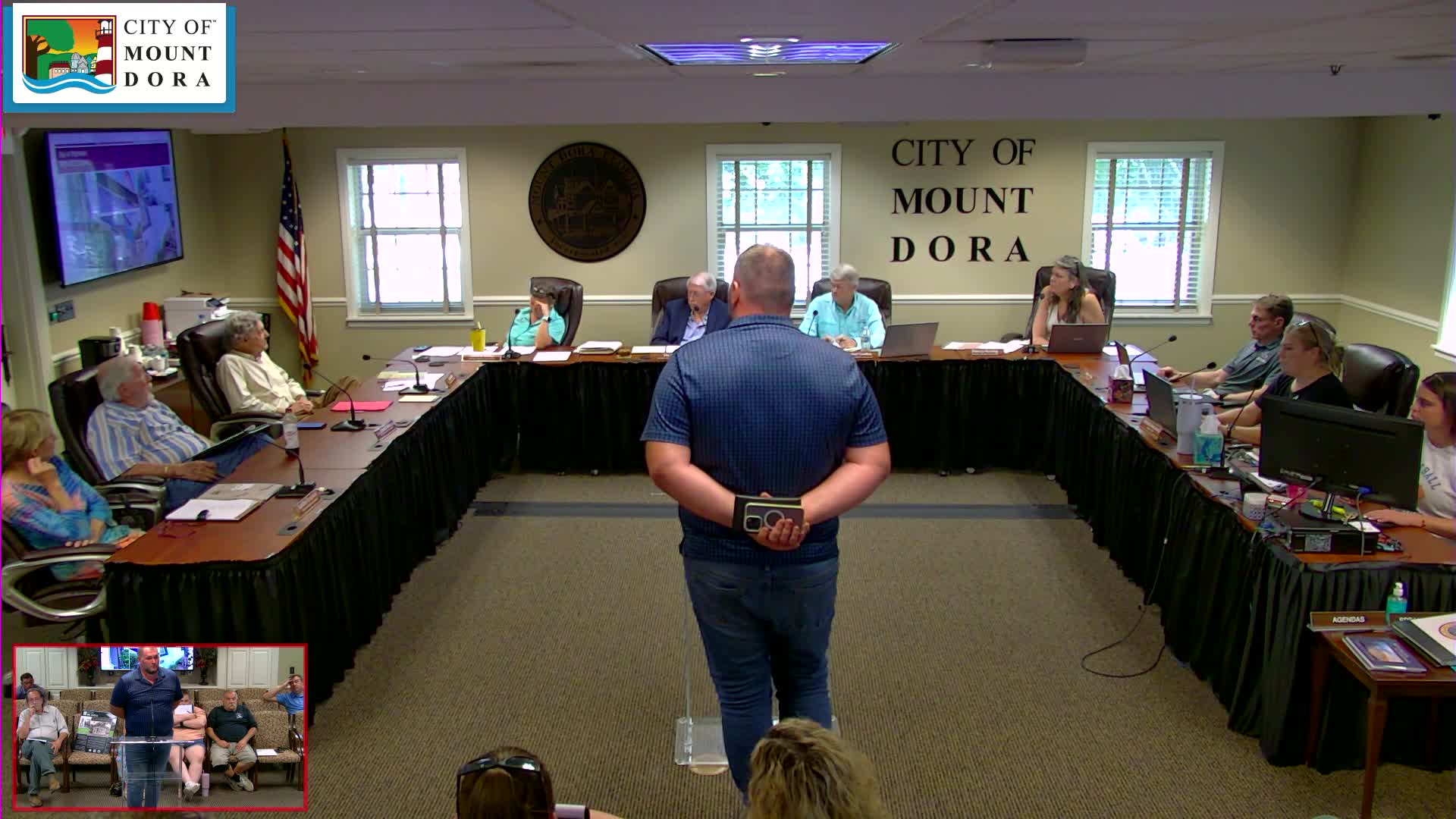Historic District Siding Controversy Sparks Heated Debate
July 31, 2024 | City of Mount Dora, Lake County, Florida

This article was created by AI summarizing key points discussed. AI makes mistakes, so for full details and context, please refer to the video of the full meeting. Please report any errors so we can fix them. Report an error »

In a recent government meeting, a contentious discussion unfolded regarding the replacement of siding on a historic property, highlighting the challenges of maintaining architectural integrity in designated historical districts. The board deliberated over an application that proposed using modern hardy board siding, which was deemed inconsistent with the original materials of the house, dating back to 1915.
Board members emphasized the importance of adhering to historical guidelines that mandate repairs and replacements to closely match the original materials in size, shape, and texture. One member pointed out that the existing siding had withstood the test of time for over a century, suggesting that the same type of wood siding should be used for any replacements.
The discussion revealed a significant concern about the financial implications for the property owner, who had already begun work without prior approval from the historical society. Board members reiterated that it is the owner's responsibility to understand the regulations governing renovations in historical districts.
After extensive debate, the board ultimately decided to partially reject the staff's findings and approved the application with conditions. The approval stipulated that the replacement siding must be wood, matching the original material, rather than the proposed hardy board. This decision aims to preserve the historical character of the property while allowing the owner to proceed with necessary repairs.
The meeting concluded with a unanimous vote in favor of the motion, underscoring the board's commitment to maintaining the integrity of the historical district while navigating the complexities of modern renovations.
Board members emphasized the importance of adhering to historical guidelines that mandate repairs and replacements to closely match the original materials in size, shape, and texture. One member pointed out that the existing siding had withstood the test of time for over a century, suggesting that the same type of wood siding should be used for any replacements.
The discussion revealed a significant concern about the financial implications for the property owner, who had already begun work without prior approval from the historical society. Board members reiterated that it is the owner's responsibility to understand the regulations governing renovations in historical districts.
After extensive debate, the board ultimately decided to partially reject the staff's findings and approved the application with conditions. The approval stipulated that the replacement siding must be wood, matching the original material, rather than the proposed hardy board. This decision aims to preserve the historical character of the property while allowing the owner to proceed with necessary repairs.
The meeting concluded with a unanimous vote in favor of the motion, underscoring the board's commitment to maintaining the integrity of the historical district while navigating the complexities of modern renovations.
View full meeting
This article is based on a recent meeting—watch the full video and explore the complete transcript for deeper insights into the discussion.
View full meeting